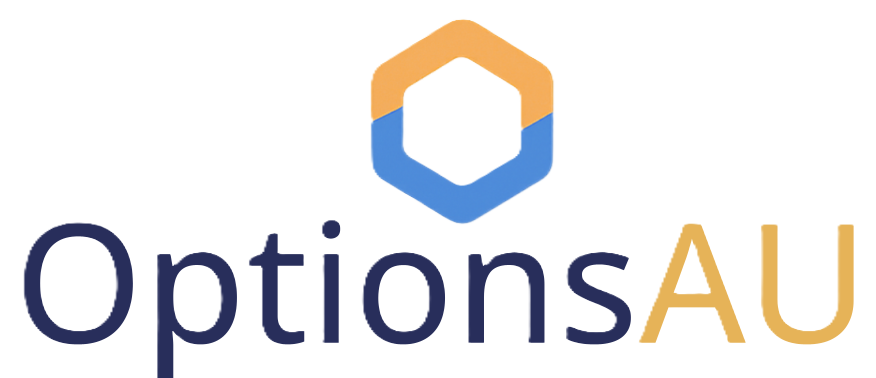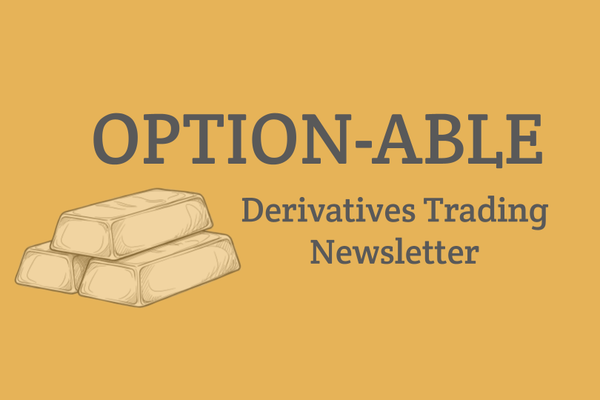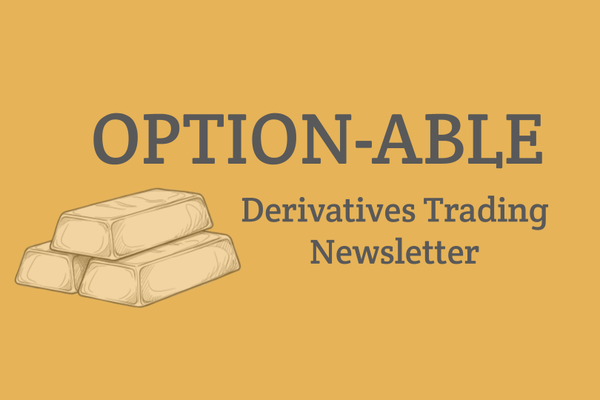Options Basics
This guide provides a foundational understanding of options trading, covering the core concepts, key players, and the components that define every options contract.
Section 1: Introduction
1.1 What is an Option?
An option is a derivative contract whose value is based on an underlying asset like a stock or index. It is not ownership in a company. Instead, it's a contract that gives the buyer a right and the seller an obligation to buy or sell the underlying asset at a set price on or before a specific date. This structure allows for the transfer of risk in exchange for a payment, known as a premium.
1.2 The Key Players: Buyers vs. Sellers
Every options trade has two sides:
- The Buyer (Holder): Pays a premium to acquire the right, but not the obligation, to buy or sell the underlying asset. The buyer's maximum loss is limited to the premium paid.
- The Seller (Writer): Receives the premium in exchange for accepting the obligation to fulfil the contract if the buyer exercises their right. The seller's profit is limited to the premium, but their potential risk can be substantial.
1.3 Option Contract Terminology
Every option is defined by four key components:
- Underlying Asset: The stock, ETF, or index the contract is based on.
- Strike Price: The fixed price at which the asset can be bought or sold. This price does not change.
- Expiration Date: The date the contract becomes void. The option must be exercised on or before this date.
- Premium: The price of the option contract, paid by the buyer to the seller.
| Term | Definition |
| Underlying Asset | The stock, ETF, or index on which the options contract is based. |
| Strike Price | The fixed price at which the underlying asset may be bought or sold. |
| Expiration Date | The final day the options contract is valid before it ceases to exist. |
| Premium | The price of the options contract, paid by the buyer to the seller. |
| Buyer (Holder) | The party who pays the premium and gains a right, but not an obligation. |
| Seller (Writer) | The party who receives the premium and accepts an obligation. |
Section 2: Calls and Puts
2.1 Call Options: The Right to Buy
A call option gives the holder the right, but not the obligation, to buy an underlying asset at the strike price.
- Buying a Call (Long Call): A bullish strategy used when you expect the asset's price to rise. It offers unlimited profit potential with risk limited to the premium paid.
- Selling a Call (Short Call): A neutral-to-bearish strategy used when you expect the asset's price to stay flat or fall. Profit is limited to the premium received, but the risk is theoretically unlimited.
2.2 Put Options: The Right to Sell
A put option gives the holder the right, but not the obligation, to sell an underlying asset at the strike price.
- Buying a Put (Long Put): A bearish strategy used when you expect the asset's price to fall. It offers substantial profit potential with risk limited to the premium paid.
- Selling a Put (Short Put): A neutral-to-bullish strategy used when you expect the asset's price to stay flat or rise. Profit is limited to the premium received, while the risk can be significant if the price falls.
2.3 The Dual Purpose of Options: Speculation and Hedging
Options are used for two main purposes:
- Speculation: Making a leveraged bet on an asset's future price direction. This allows traders to control a large position with less capital than buying the asset outright.
- Hedging: Using options like an insurance policy to protect an existing portfolio from losses. A common example is buying a protective put to limit the downside risk of a stock you own.
Section 3: Option's Price
3.1 The Option Premium Formula
The price of an option is determined by a simple formula:
Option Premium=Intrinsic Value+Extrinsic Value
Extrinsic value is also commonly known as time value.
3.2 Intrinsic Value and Moneyness
Intrinsic value is the amount of immediate, tangible value an option has if exercised instantly. It can never be negative; if the calculation is less than zero, the intrinsic value is zero.
- Call Intrinsic Value:
Current Stock Price - Strike Price - Put Intrinsic Value:
Strike Price - Current Stock Price
An option's relationship to the stock price is called its "moneyness":
- In-the-Money (ITM): The option has intrinsic value.
- At-the-Money (ATM): The strike price is equal to the stock price. It has no intrinsic value.
- Out-of-the-Money (OTM): The option has no intrinsic value.
3.3 Extrinsic Value
Extrinsic value is the portion of the premium that is not intrinsic value. It is the price paid for the possibility that the option will become profitable before it expires. Its two main drivers are:
- Time to Expiration: More time means more opportunity for a favorable price move, increasing extrinsic value. This value decays as expiration approaches, a process called time decay.
- Implied Volatility (IV): Higher expected price fluctuation (volatility) increases the chance of the option becoming profitable, leading to higher extrinsic value.
| Moneyness | Call Option Condition | Put Option Condition | Has Intrinsic Value? |
| In-the-Money (ITM) | Stock Price > Strike Price | Stock Price < Strike Price | Yes |
| At-the-Money (ATM) | Stock Price ≈ Strike Price | Stock Price ≈ Strike Price | No |
| Out-of-the-Money (OTM) | Stock Price < Strike Price | Stock Price > Strike Price | No |
Section 4: The Greeks
The "Greeks" are risk metrics that measure an option's sensitivity to different market factors.
- Delta (Δ): Measures how much an option's price is expected to change for every $1 move in the underlying asset. It is also used as a rough estimate of the probability of an option expiring in-the-money.
- Gamma (Γ): Measures the rate of change of Delta. It shows how quickly an option's directional exposure will change as the stock price moves.
- Theta (Θ): Measures the rate of time decay, or how much value an option loses each day as it approaches expiration. Time decay works against option buyers and benefits option sellers.
- Vega (ν): Measures an option's sensitivity to a 1% change in implied volatility. Higher volatility increases the price of both calls and puts.
- Rho (ρ): Measures sensitivity to changes in interest rates and typically has the least impact on short-term options.
| Greek (Symbol) | What It Measures | Favorable for Long Option? | Favorable for Short Option? |
| Delta (Δ) | Sensitivity to stock price change | Favorable stock move | Unfavorable stock move |
| Gamma (Γ) | Rate of change of Delta | Accelerates gains/losses | Accelerates gains/losses |
| Theta (Θ) | Sensitivity to time decay | No (value decreases daily) | Yes (collects decay) |
| Vega (ν) | Sensitivity to implied volatility | Yes (if volatility rises) | No (if volatility rises) |
| Rho (ρ) | Sensitivity to interest rates | Minor impact | Minor impact |
Section 5: The Option Chain
An option chain is a table listing all available option contracts for an asset. It typically shows calls on the left and puts on the right, with strike prices down the middle.

5.1 Key Columns in an Option Chain
- Strike: The price at which the option can be exercised.
- Bid/Ask: The current prices at which you can sell (bid) or buy (ask) the option. The difference is the bid-ask spread.
- Last: The price of the most recent trade.
- Volume: The total number of contracts traded during the current day. It resets to zero daily.
- Open Interest (OI): The total number of contracts that are currently open and have not been closed or exercised. It is updated once per day.
- Implied Volatility (IV): The market's forecast of future volatility.
5.2 Volume vs. Open Interest
Both volume and open interest are crucial for assessing an option's liquidity. High volume indicates strong interest today, while high open interest shows a historically deep and active market. Traders generally prefer options with high volume and open interest, as this leads to tighter bid-ask spreads and lower transaction costs. Many traders look for open interest of at least 100, and preferably over 1,000, for active trading.
Section 6: Visualizing Risk and Reward: Payoff Diagrams
A payoff diagram is a graph that visually represents the potential profit or loss of an options strategy at expiration. The horizontal axis shows the underlying stock price, and the vertical axis shows the profit or loss. These diagrams clearly illustrate a strategy's maximum profit, maximum loss, and breakeven point(s).

6.1 The Four Foundational Payoffs
- Long Call (Buying a Call)
- Profile: Bullish strategy.
- Max Profit: Unlimited.
- Max Loss: Limited to the premium paid.
- Breakeven:
Strike Price + Premium Paid.
- Short Call (Selling a Call)
- Profile: Neutral-to-bearish strategy.
- Max Profit: Limited to the premium received.
- Max Loss: Unlimited.
- Breakeven:
Strike Price + Premium Received.
- Long Put (Buying a Put)
- Profile: Bearish strategy.
- Max Profit: Substantial (if stock goes to $0).
- Max Loss: Limited to the premium paid.
- Breakeven:
Strike Price - Premium Paid.
- Short Put (Selling a Put)
- Profile: Neutral-to-bullish strategy.
- Max Profit: Limited to the premium received.
- Max Loss: Substantial (if stock goes to $0).
- Breakeven:
Strike Price - Premium Received.
Section 7: Exercise, Assignment, and Settlement
7.1 Exercise and Assignment
- Exercise: The act by which the option buyer invokes their right to buy or sell the underlying asset.
- Assignment: The resulting obligation placed upon the option seller to fulfill the contract terms. A clearinghouse randomly assigns the exercise notice to a seller of the same option.
- Automatic Exercise: Options that are in-the-money (even by $0.01) at expiration are typically exercised automatically.
7.2 Settlement
- Physical Settlement: The actual underlying shares are exchanged. This is common for options on individual stocks and ETFs.
- Cash Settlement: A cash payment equal to the option's intrinsic value is exchanged. This is used for index options, as an index cannot be physically delivered.
7.3 American vs. European Style Options
This determines when an option can be exercised:
- American Style: Can be exercised on any business day up to and including expiration. This introduces the risk of early assignment for the seller. Equity options are often American style.
- European Style: Can only be exercised on the expiration date. This eliminates the risk of early assignment. Index options are often European style.
Section 8: Equity vs. Index
8.1 Equity Options
These are options on the shares of a single company or an ETF. They are used to trade or hedge risks related to a specific entity.
- Settlement: Physically settled (shares are exchanged).
- Exercise Style: Typically American style, allowing for early exercise.
8.2 Index Options
These options are based on a broad market index. They allow traders to take a position on the overall market direction.
- Settlement: Cash-settled.
- Exercise Style: Typically European style, with no risk of early assignment.
- Volatility: An index is generally less volatile than its individual component stocks, as it represents a diversified basket.
| Feature | Equity / ETF Options | Index Options |
| Underlying Asset | Shares of a single stock or ETF | The value of a broad market index |
| Settlement Method | Physical (delivery of shares) | Cash (transfer of net profit/loss) |
| Exercise Style | Typically American | Typically European |
| Primary Use Case | Speculate/hedge on a single company/ETF | Speculate/hedge on the broad market |
| Volatility Profile | Higher (tied to single-stock risk) | Lower (diversified basket of stocks) |
Section 9: Conclusion
9.1 Recapping the Foundations
- Options are contracts giving buyers rights and sellers obligations.
- Calls are for bullish outlooks; Puts are for bearish outlooks.
- An option's premium is its intrinsic value + extrinsic value.
- The Greeks measure risk and sensitivity to market changes.
- The option chain is the central hub for trading; volume and open interest are key liquidity metrics.
- Payoff diagrams visualize a strategy's risk and reward.
9.2 Getting Started: A Practical Checklist
- Open an Approved Brokerage Account: Options trading requires specific broker approval, often with different levels based on the complexity of the strategies you wish to use.
- Practice with Paper Trading: Use a simulated account to test strategies with virtual money before risking real capital. This is a risk-free way to gain practical experience.
- Continue Your Education: This guide is a starting point. Explore more advanced strategies to build upon this foundation.
- Understand the Risks: Options trading involves significant risk and is not suitable for all investors. Before trading, you should read and understand the standard risk disclosure documents provided by regulators or clearinghouses.




